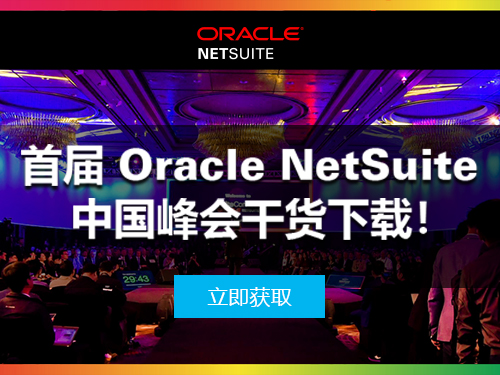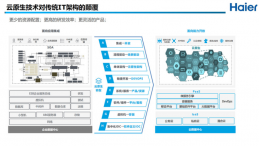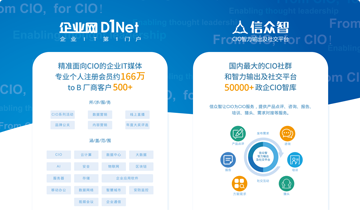戴爾已經在成為全方位IT解決方案供應商的路上取得了很大的進展。下面是戴爾的Marc Stitt向我們談論的該公司的發展重點。
Marc Stitt曾經在Quest工作,如今是虛擬化和私有云市場部的高級經理,他最近與我取得了聯系。他想花些時間談談戴爾的前景。由于我不經常與戴爾對話,因此很欣賞他做出的努力。
戴爾的歷史定位
惠普、IBM、Sun和其他主要系統供應商著眼于提供包含系統、存儲、網絡、運行系統、開發工具、應用框架、虛擬平臺和專業服務的完整環境;而戴爾主要注重劃算、高容量的行業標準系統。
當一個用戶想要全面、完整的系統解決方案時,戴爾必須與合伙人合作,而其他供應商則依據自己的產品和服務組合提供集成服務。
戴爾的新定位
戴爾已經清楚地將自己重新定位在依附X86處理器;Windows 和Linux;第三方開發、部署環境和虛擬機器軟件的競爭者;為了鞏固自己的定位,戴爾已經在過去幾年收購了一些公司。明顯的目的就是在虛擬化和云就算領域有一席之地。
自2010年起,公司已經收購了以下公司:
2010年2月11日收購了KACE網絡,給戴爾提供了系統管理裝置
2010年2月19日收購了Exanet ,使戴爾在存儲虛擬化市場的分布式文件系統中有了一席之地
2010年7月1日收購了Scalent,使戴爾具備了創建動態虛擬環境的工具
2010年7月30日收購了Ocarina網絡,給了戴爾另一套存儲虛擬化工具。Ocarina注重存儲復制和優化
2010年11月2日收購了Boomi ,戴爾擁有了一套能集成基于云的應用程序的工具
2010年12月13日,戴爾將Compellent加入到存儲系統產品
2011年1月4日,SecureWorks加入戴爾,給戴爾提供了安全服務
2011年7月20日收購Force10,由此戴爾產品中加入了數據中心網絡和網絡虛擬化
特別要指出,戴爾現在不再試圖成為全方位的供應商。公司借助自身的訪問虛擬化、應用程序虛擬化和處理虛擬化的能力依附于合作者。它已經著眼于網絡產品以及網絡虛擬化;存儲虛擬化;安全性;和管理產品。
戴爾當前的前進方向
Stitt說明戴爾如今注重虛擬化和私有云領域。他說,戴爾正在集中提供IT服務管理工具,工作負載生命周期管理和基礎設施管理。目的是提供能讓客戶提高業務靈活性、減少運行成本、更好利用系統資源的工具。
在戴爾看來,客戶正在轉變。他們正在使用“虛擬化”(定義為創建虛擬服務器的虛擬機器軟件),以便能夠壓縮當前的工作量。今天所做的努力將使客戶能夠決定托管工作負荷的地點。現在這些工作負荷大部分托管在企業內部,但是戴爾正在努力幫助客戶在現場創建私有云環境來獲得靈活性、自助服務和其他的好處。戴爾將幫助客戶把這部分工作量移出企業,來充分利用外包私有數據中心。當這個辦法成為最佳辦法時,戴爾希望幫助其他客戶利用公共云。
快照分析
公司已經聚集了能夠促進移入虛擬環境的工具,并且從那里進入云中。迄今為止戴爾也沒有試圖成為全能服務供應商。它正在與合作伙伴共同提供需要的一切來支持客戶的IT環境。
至于這種方法是否比其他的方法集成更緊密還不清楚。
清楚的是,當戴爾只是一個系統供應商時,取得了巨大的進步。
Summary:Dell has made great progress towards being a soup-to-nuts supplier of IT solutions. Dell’s Marc Stitt discusses where the company is focused today.
Marc Stitt, formerly of Quest and now Dell’s Senior Manager for Virtualization and Private Clouds Marketing, reached out to me recently. That he had made a change and wanted to spend some time talking about Dell’s vision. Since I don’t speak with Dell all that often, I appreciated the effort.
Historical Dell Position
Where HP, IBM, Sun and other major system suppliers focused on providing a complete environment that included systems (based upon both X86 and their own processors), storage, networking, operating systems, development tools, application frameworks, virtualization platforms and professional services; Dell focused primarily on cost effective, high-volume Industry standard systems.
When a customer wanted a comprehensive, complete systems solution, Dell had to work with partners while the others could offer a integrated offering based upon their own portfolio of products and services.
Dell clearly has decided to reposition itself as a competitor without losing its reliance on X86 processors; Windows and Linux; third party development and deployment environments and virtual machine software. To bolster its position, Dell has been acquiring companies over the last few years. The obvious goal was to build out a position in virtualization and cloud computing.
Repositioning Dell
Since 2010, the company has purchased the following companies:
KACE Networks was purchased February 11, 2010 giving Dell a systems management appliance
Exanet was purchased February 19, 2010 giving Dell a position in a distributed file systems segment of the storage virtualization market
Scalent was acquired July 1, 2010, giving Dell the tools to create a dynamic virtual environment
Ocarina Networks was acquired July 30, 2010, giving Dell another set of storage virtualization tools. Ocarina focused on storage deduplication and optimization.
Boomi as snatched up November 2, 2010 to give Dell a set of tools allowing cloud-based applications to be integrated.
Compellent was next. December 13, 2010 Dell added the company to its storage systems portfolio.
SecureWorks joined the party January 4, 2011 giving Dell security services.
Force10 was purchased July 20, 2011 to add data center networking and networking virtualization to Dell’s portfolio.
It is important to note that Dell still is not trying to be a soup-to-nuts supplier. The company relies on partners for its access virtualization, application virtualization, and processing virtualization capabilities. It has focused its efforts on fleshing out a portfolio of networking and network virtualization; storage virtualization; security; and management products.
Where Dell is headed now
Stitt presented Dell’s focus in the area of virtualization and private clouds. Dell is focused, he said, on providing the tools for IT Service Management, Workload Lifecycle Management and Infrastructure Management. The goals were to offer tools that made it possible for customers to improve their business agility, reduce their operational costs, and better utilize their system resources.
In Dell’s view, customers are in transition. They are using “virtualization” (defined as virtual machine software to create virtual servers) so that they can encapsulate their workloads today. Today’s efforts will make it possible for customers to decide where their workloads should be hosted. These workloads are largely hosted on-premise today, but Dell is working hard to help its customers create a private cloud environment on-site to obtain agility, self-service and other benefits of that approach. Dell will help some customers move part of these workloads off-premise to take advantage of outsourced private data centers. Dell expects to help other customers take advantage of public clouds when that approach is best.
Snapshot analysis
The company has gathered together a portfolio of tools that can facilitate a move to a virtualized environment and from there on into the clouds. It, to date, isn’t trying to be a full service supplier. It is working with its partners to offer everything needed to support customer’s IT environments.
It is not clear if this approach will turn out to be better than the more tightly integrated approaches offered by others.
What is clear is that Dell has made great progress from the days when it was only a supplier of systems.










































































































 京公網安備 11010502049343號
京公網安備 11010502049343號